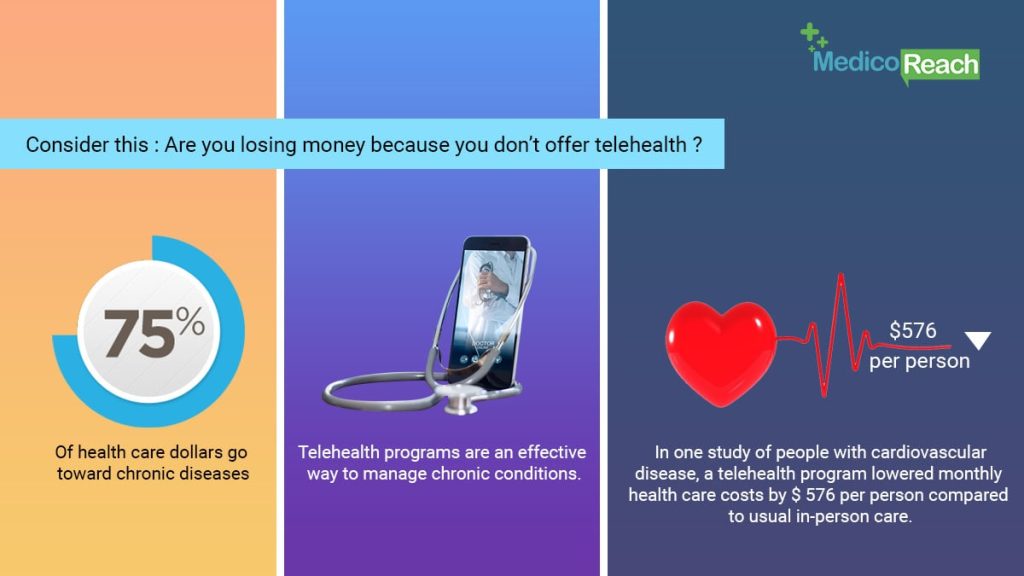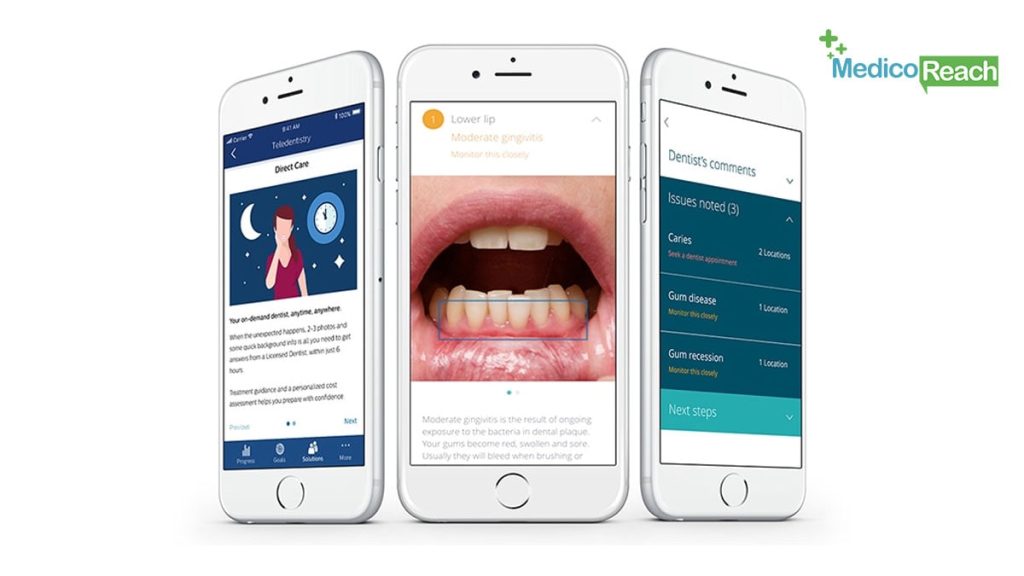The effective adoption of telehealth gained momentum after the pandemic phase. Today, healthcare companies and experts are capitalizing on this technology to refine their services.
Almost 44% of physicians forecast telehealth use to attend to half of their appointments. Hence, telemedicine is here to stay and grow exponentially, be it in local retail clinics or large-scale healthcare organizations.
However, every technology has practical challenges. Telehealth is no exception. Businesses in the healthcare sector need to leverage this information.
Hence, this blog aims to inform modern professionals about the benefits and challenges of telehealth in a simplified manner.
The Concept of Telehealth Explained
On a generic level, telehealth might only denote connecting with a doctor through video calls. However, this technology also covers the following services:
- Offering healthcare information
- Providing health-centric education
- Real-time diagnosis and clinical care
- Regular remote health monitoring
Overall, telehealth covers various health facets, including medical care. Notably, the pandemic proved to be the main accelerator in the wide implementation of this technology.
As you can observe, 65% of physicians did not use telehealth in the pre-pandemic era. However, over 95% of healthcare providers use this technology after the global viral outbreak.
Benefits of Telehealth
Adopting this technology can offer numerous benefits to healthcare companies and professionals. Here are some of the significant advantages.
1. Cost Effectiveness

Remote monitoring and analysis of a patient’s health lower costs associated with the following aspects:
- Service costs
- Patient visit expenses
- Data storage costs
- Auxiliary insurance costs
Due to these benefits, a staggering 74% of US consumers are interested in using telehealth services. Hence, organizations can utilize cost savings to plan more effective healthcare marketing campaigns.
2. Improved Patient Engagement
A satisfied patient is a vital asset for any healthcare provider. Notably, the benefits and challenges of telehealth revolve mostly around service enhancement.

Providers are finding it convenient to achieve excellent patient satisfaction through these channels:
- Remote appointment booking
- Digital reminders
- Online reviews
In addition, telehealth enables lower rates of medical anxieties due to eliminating the need for physical visits.
3. Enhanced Patient Outcomes
Remote patient monitoring technology leads to effective treatment of lifestyle disorders. Patients falling in the sensitive health category can access expert opinions without hassle.
This benefit also encourages healthcare technology start-ups to design useful and compatible telehealth software.

Understanding the benefits and challenges of telehealth can prove helpful in understanding the service aspect of this sector. Here’s how telehealth improves the brand reputation of healthcare providers
- Ease in post-discharge care
- Convenient addressal of patient queries
- Protection of high-risk patients
- Low hospital readmissions
For instance, a study concludes 31% reduction in hospital admissions due to the use of telehealth technology. These positive outcomes contribute to a healthcare company’s reputation.
Challenges of Telehealth
Knowing all the benefits and challenges of telehealth can go beyond the scope of any blog. However, here are three key telehealth issues that companies and healthcare experts need to address.
1. Scalability Factor
Even today, some patients and professionals portray reluctance to learn new telehealth platforms.

The reasons for this challenge are as follows:
- Lack of technological skills
- Complex user interface
- Internet connectivity issues
- Unskilled employees
One or more of these factors halt the steady expansion of telehealth. Hence, encouraging physicians to use this technology can be a solution for healthcare organizations.
2. Rules and Regulations

There is a dire necessity for a centralized law for the adoption of telehealth. The benefits and challenges of telehealth thus continue a similar path from the pre-pandemic era.
Notably, the regulations related to telemedicine need to adapt to new technological enhancements.
For instance, protecting patient privacy is always a significant concern when using such platforms. Hence, IT companies catering to the healthcare sector require a uniform contribution towards this aspect.
At this time, it is necessary to modify the regulations by considering the requirement of telehealth and protecting patient privacy.
3. Conventional Mindset

The global telemedicine market can reach up to USD 400 billion in 2027. Hence, the ascending growth of this technology is evident.
Still, the adoption of telehealth also relates to the patient mindset. A considerable population will prefer in-person consultation due to the following factors:
- Technical problems
- Lack of personal touch
- Potential mismanagement
- Connectivity issues
- Lack of technological skills
Overall, healthcare providers need to promote the use of this technology to patients. In addition, awareness will become crucial to address this practical challenge.
The Benefits and Challenges of Telehealth: A Quick Look
Elaborating all the main aspects of the benefits and challenges of telehealth will span beyond this blog’s scope. Hence, a quick summary can prove helpful.
Table: Summary of advantages and existing issues of telehealth technology
| Sr. No | Benefits | Challenges |
| 1 | Cost reduction | Scalability |
| 2 | Increased patient engagement | Outdated regulations |
| 3 | Enhanced patient outcomes | Traditional health diagnosis mindset |
| 4 | High convenience and accessibility | Requirement of technical training |
| 5 | Extended specialist access | Impact on care continuity |
| 6 | Elimination of commuting and travel | Tricky reimbursement rules |
Telehealth Technology
Overall, telehealth has a greater potential to benefit the healthcare system. The only priority is to solve the addressable challenges through unified collaboration and discussions.
In a Nutshell
After analyzing the major benefits and challenges of telehealth, one can conclude that the advantages outweigh existing issues.
Healthcare organizations
profit from reduced costs, better patient engagement, and enhanced outcomes. On the other hand, scaling this technology to a broader audience remains challenging.
Also, tricky policies, outdated regulations, and a traditional ‘in-person consultation’ mindset are some main points to address. All these challenges can find practical solutions through enhancing telehealth technology, offering training, and spreading awareness.
Healthcare technology companies need to simplify telehealth platforms for expert and patient convenience. Overall, organizations can offer safe and hi-tech services through the use of telehealth modules.











